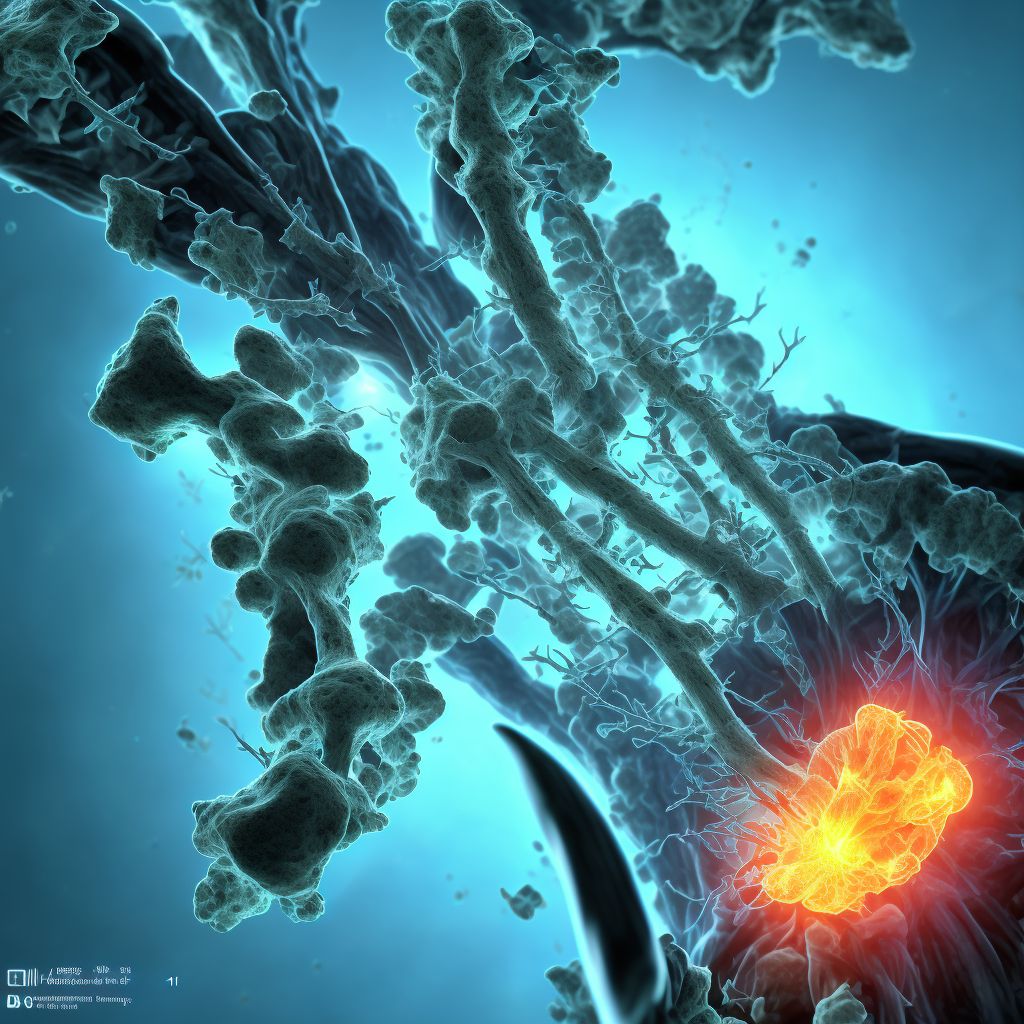
Nondisplaced fracture of medial condyle of unspecified tibia, subsequent encounter for open fracture type IIIA, IIIB, or IIIC with routine healing Save
ICD-10 code: S82.136F
Disease category: S82.136: Nondisplaced fracture of medial condyle of unspecified tibia
Nondisplaced Fracture of Medial Condyle of Unspecified Tibia: Understanding Subsequent Encounters for Open Fracture Type IIIA, IIIB, or IIIC with Routine Healing
When it comes to bone fractures, one specific type that may occur is a nondisplaced fracture of the medial condyle of the unspecified tibia. This condition refers to a break in the bony prominence on the inner side of the tibia, also known as the shinbone. While fractures can be categorized into various types, subsequent encounters for open fracture type IIIA, IIIB, or IIIC with routine healing require specific attention and care.
Understanding the implications and management of such fractures is crucial for both medical professionals and patients. However, it is important to note that this article will focus on providing information about the condition itself and not on treatment options.
- Definition: A nondisplaced fracture of the medial condyle of the unspecified tibia occurs when there is a break in the bony prominence of the inner side of the shinbone. This type of fracture does not result in significant movement or misalignment of the bone fragments.
- Cause: Nondisplaced fractures can occur due to a variety of reasons, including trauma or direct impact to the affected area. Sports injuries, falls, or accidents are common causes of fractures in the medial condyle of the tibia.
- Symptoms: Patients with this type of fracture may experience pain, tenderness, swelling, and difficulty bearing weight on the affected leg. Bruising and limited range of motion can also be present.
- Diagnosis: To determine if a patient has a nondisplaced fracture of the medial condyle of the unspecified tibia, medical professionals may perform a physical examination, assess the patient's medical history, and request imaging tests such as X-rays or MRI scans.
- Treatment: (Not covered in this article)
It is important for individuals with this type of fracture to seek medical attention promptly to ensure the fracture heals properly and to prevent any potential complications.
Remember, the information provided in this article is intended for educational purposes only and should not replace professional medical advice. If you suspect you have a nondisplaced fracture of the medial condyle of the unspecified tibia, consult with a healthcare professional for an accurate diagnosis and appropriate treatment options.
Treatment of Nondisplaced fracture of medial condyle of unspecified tibia, subsequent encounter for open fracture type IIIA, IIIB, or IIIC with routine healing:
Treatment Options for Nondisplaced Fracture of Medial Condyle of Unspecified Tibia
If you have been diagnosed with a nondisplaced fracture of the medial condyle of your tibia, you may be wondering about the available treatment options. This type of fracture is characterized by a break in the bony prominence on the inner side of your tibia, just below the knee joint. It is important...
To see full information about treatment please Sign up or Log in